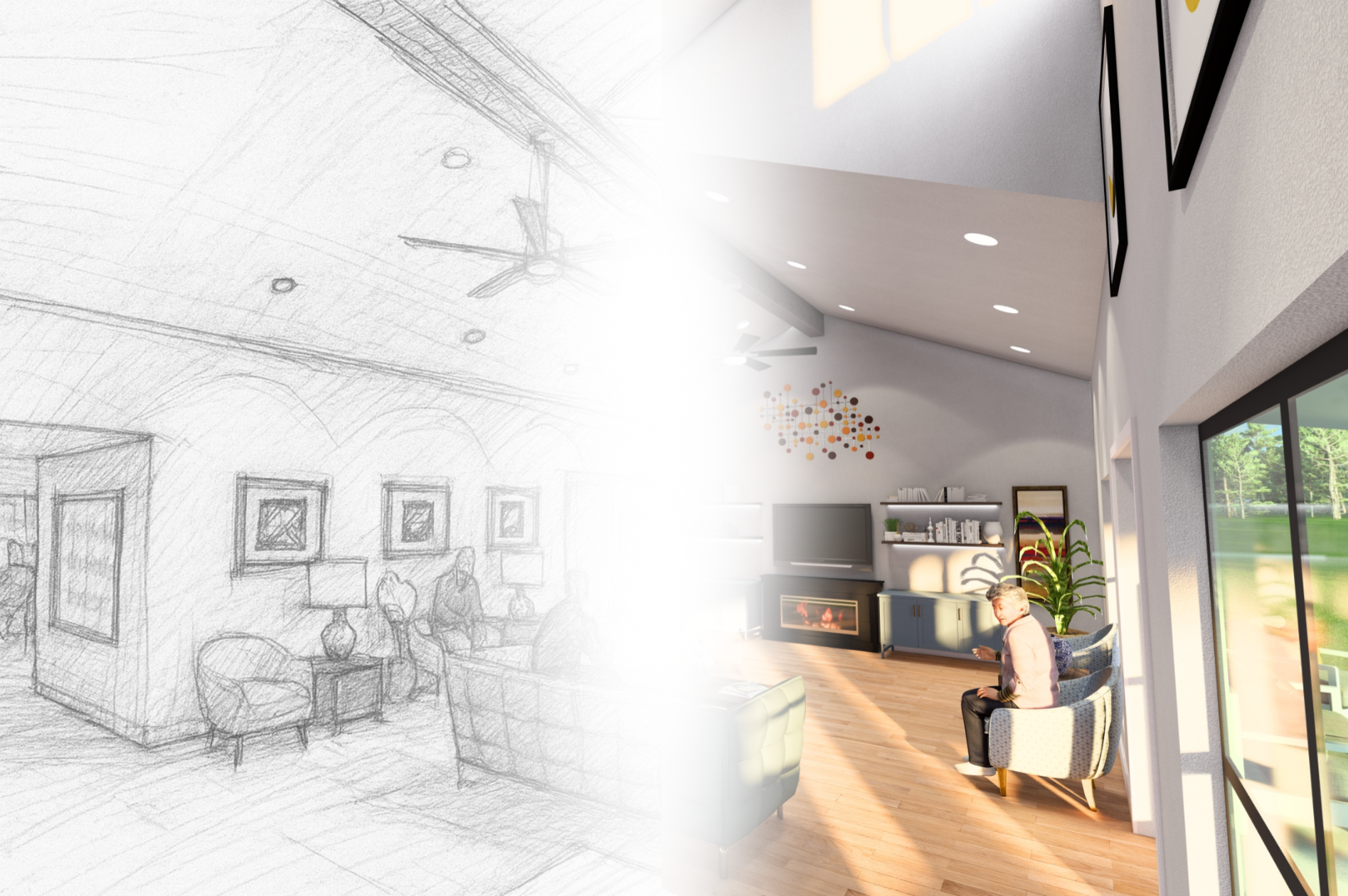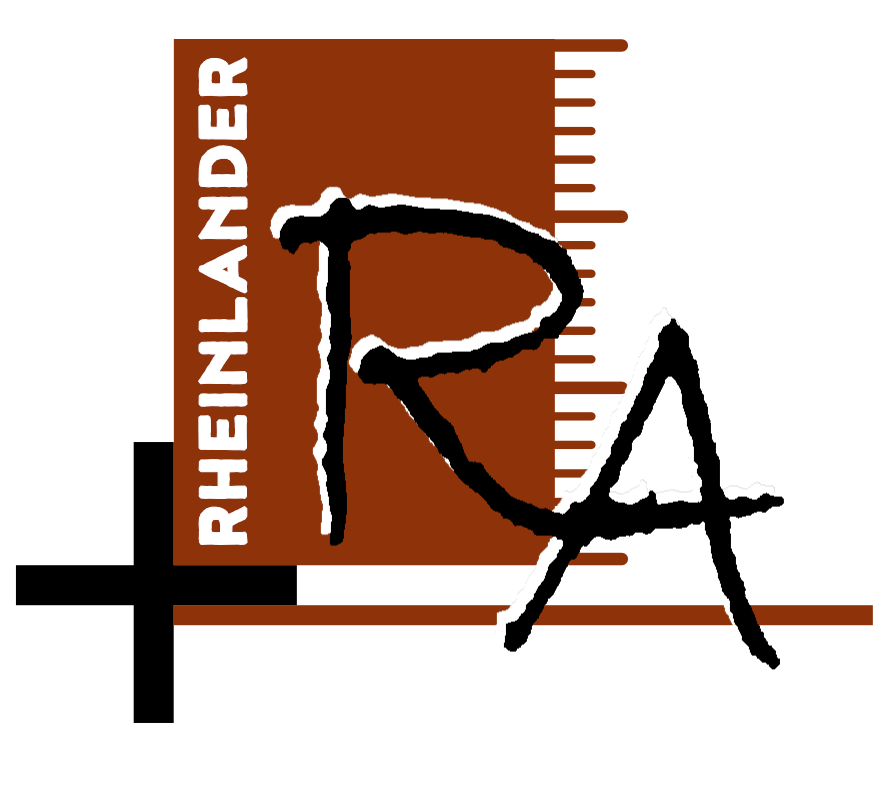At Rheinlander Architects, we believe that sustainability in senior living and retirement communities is about smart, thoughtful choices— not just a long list of certifications.
Small, cost-effective steps can make a big impact, improving comfort, efficiency, and quality of life for senior residents without overwhelming budgets.
In this blog, we’ll explore practical ways to integrate sustainability into senior living design, including energy and water conservation, smarter building materials, sustainable landscaping, and how early collaboration helps align green goals with real-world needs.
Because at the end of the day,
good design is sustainable design—and every choice matters.
Why Sustainability Matters in Senior Living
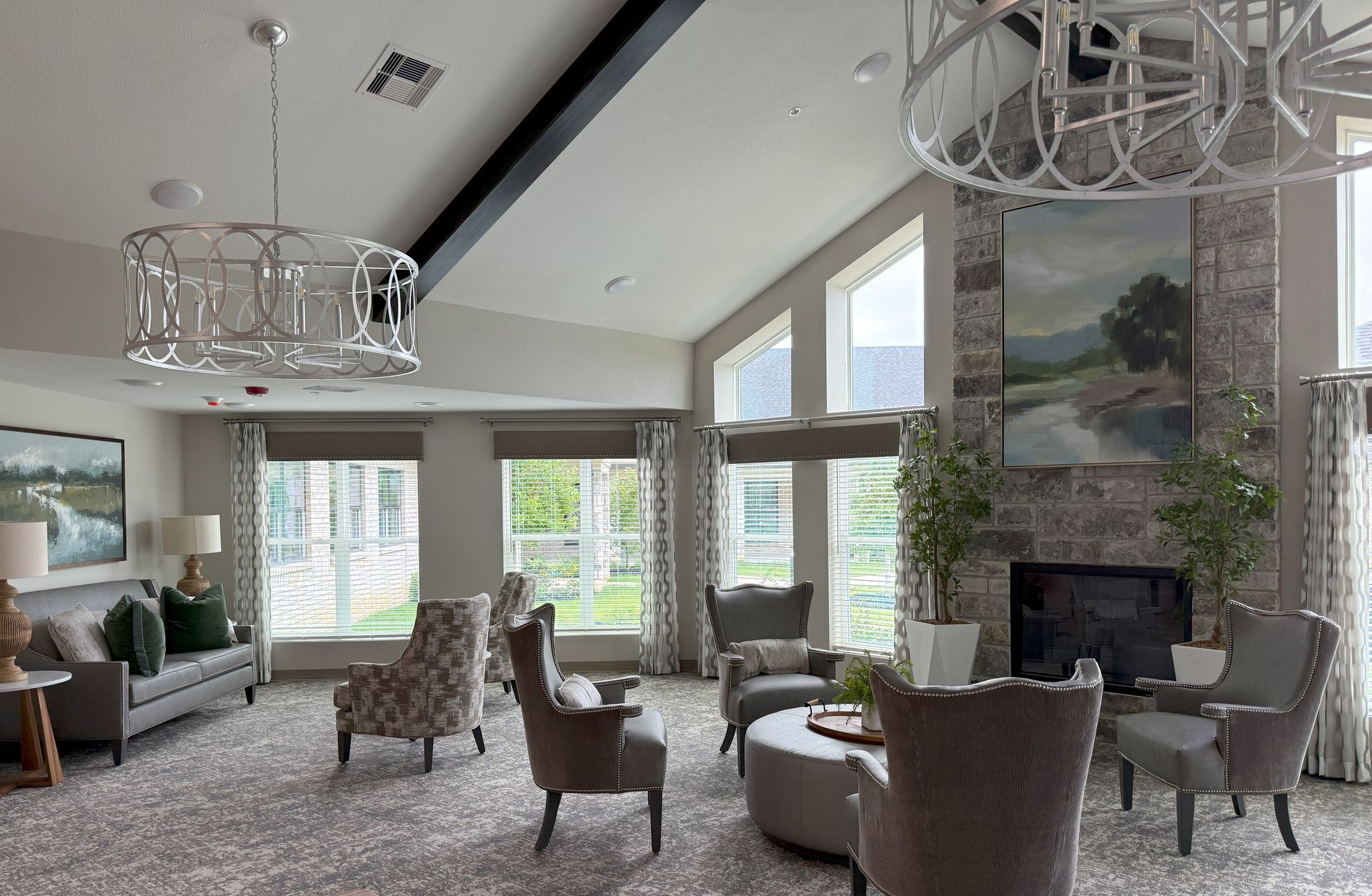
As our population ages, demand for senior living environments is growing rapidly. In the U.S. alone, more than 800,000 older adults live in over 30,000 senior housing settings—a number that’s expected to rise significantly in the coming decades.
With that growth comes a responsibility: To design spaces that are not only comfortable and supportive, but also environmentally responsible.
Sustainability isn’t just about reducing environmental impact. In senior living, it directly enhances resident wellness, operational efficiency, and community appeal.
Thoughtful design choices—like natural lighting, improved air quality, and the use of non-toxic materials—can help reduce respiratory issues and support overall health. Energy- and water-efficient systems also reduce utility costs, freeing up resources for care and amenities that directly benefit residents.
Beyond LEED: Sustainable Design Without the Premium
LEED certification is a well-known standard in green building—but it often comes with a price tag that’s out of reach for many senior housing developers. Certification fees, documentation, and consulting can range from $10,000 to over $150,000, depending on the size and scope of the project.
At Rheinlander Architects, we believe you don’t need a plaque on the wall to make a difference.
Many of the most effective sustainability strategies are also the most practical and affordable. Small upgrades—like LED lighting, low-flow fixtures, better insulation, and native landscaping—can have a big impact on both the environment and daily operations.
Sustainable design should be accessible. And with the right approach, it can be built into any project—without stretching the budget.
For real-world applications of these sustainable design principles, explore our projects like the
Army Residence Community Lakeside Landing
and the
ARC Cottages Phase I, II, & III, which embody our commitment to eco-friendly and resident-centered senior living environments.
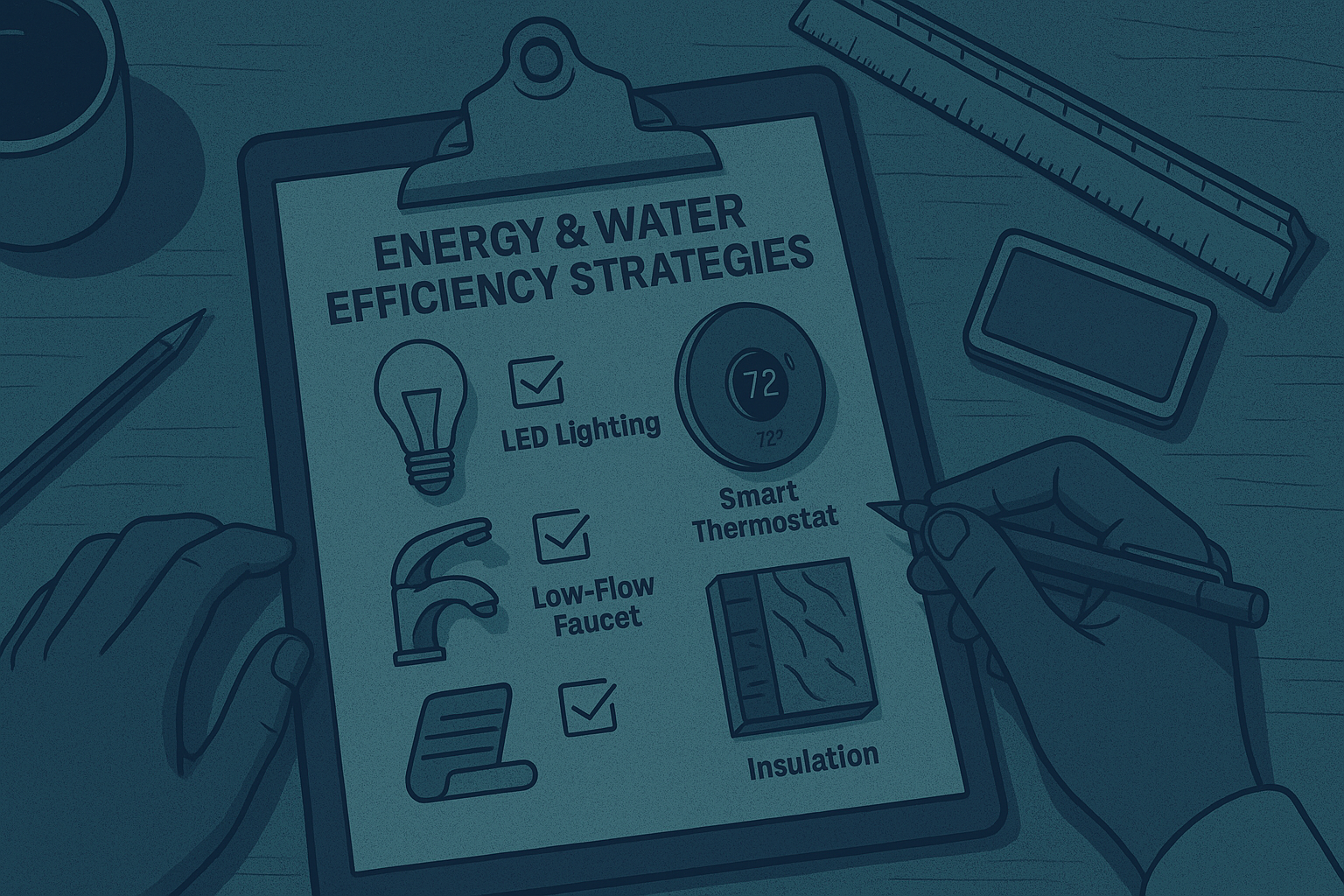
Practical Energy-Saving Strategies for Senior Living
From lighting choices to smarter heating systems, there are practical, cost-effective ways senior living projects can reduce energy use—without sacrificing the comfort residents deserve.
Thoughtful upgrades not only lower utility costs but also contribute to more energy-efficient, eco-friendly operations in the long term.
Here are some key strategies:
- LED Lighting: Swapping out incandescent bulbs for LED options is one of the simplest and most impactful upgrades.
LEDs use up to 75% less electricity
and last significantly longer, reducing both energy consumption and maintenance needs.
- Smart Thermostats: Installing programmable or smart thermostats allows for more precise control of heating and cooling systems. These devices adjust temperatures automatically based on occupancy patterns, keeping spaces comfortable when needed and conserving energy when they're not.
ENERGY STAR-certified smart thermostats can save approximately 8% on heating and cooling bills.
- Smart Power Strips: Many electronics and appliances continue to draw energy even when turned off—a phenomenon known as "phantom" or "vampire" energy use. Smart power strips detect when devices are not in active use and shut off the power supply, cutting unnecessary energy consumption.
- Proper Insulation: A well-insulated building reduces heat loss in winter and keeps interiors cooler in summer, allowing HVAC systems to operate more efficiently. In senior housing environments, where consistent indoor temperatures are critical, good insulation supports both energy conservation and resident health.
- Proper Shading: Thoughtfully designed shading—such as overhangs, awnings, or window treatments—can significantly reduce solar heat gain, especially in warmer months. By limiting direct sunlight during peak hours, shading helps maintain cooler indoor temperatures naturally, reducing reliance on mechanical cooling and improving resident comfort.
By focusing on these essential upgrades, communities can achieve meaningful energy savings, support sustainability goals, and create healthier, more comfortable environments.
Water and Waste: Conservation Made Simple
Beyond energy use, water conservation and waste management offer more opportunities to support sustainability goals with practical, low-cost solutions.
Water-saving upgrades and thoughtful waste management don't require massive investments or major construction changes.
Here are a few impactful strategies:
- Low-Flow Fixtures and Toilet Tank Banks: Upgrading to low-flow showerheads, faucets, and installing toilet tank displacement devices can significantly reduce water usage across a community. These improvements maintain comfort and functionality for residents while helping operators lower water bills and reduce the overall environmental impact. Low-flow toilets can save over
13,000 gallons of water per year per four residents.
- Recycling and Composting Programs: Establishing clear, accessible recycling practices and offering composting opportunities for kitchen and yard waste help divert materials from landfills. Beyond the environmental benefits, these programs can foster a sense of communal pride and participation. These may have a minimal carbon footprint effect—but they give residents a sense of purpose. That’s wellness, too.
By making it easy for residents and staff to participate, water conservation and waste reduction become part of the community culture—creating lasting, positive habits.
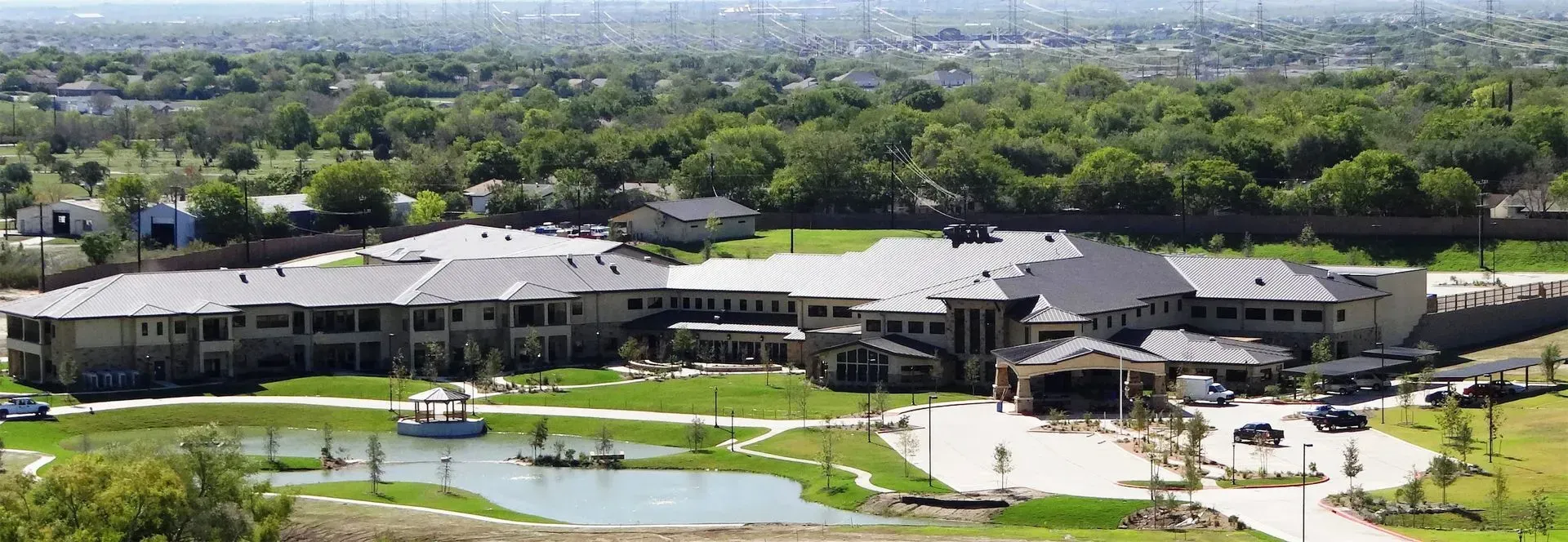
Beyond the Building: Landscaping, Transportation, and Resident Needs
Sustainability extends to outdoor spaces and transportation planning, offering additional ways to create healthier, more connected communities.
Here are our favorite ways to extend beyond the building itself:
- Native Plants: Landscaping with native plants reduces the need for irrigation, fertilizers, and pesticides—leading to lower maintenance costs and a more resilient landscape. Strategically planting the proper plants in the right location allows the building to have shade in the summer and sun in the winter.
- Rain Gardens:
Incorporating rain gardens helps manage stormwater naturally, reducing runoff and the strain on municipal drainage systems. These gardens absorb rainwater where it falls, filtering pollutants and creating inviting green spaces that enhance the beauty and ecological health of a campus.
- Shared Transportation: While bike racks are often considered a sustainability "win," they may not fit the physical capabilities of some retirement age residents. Instead, promoting shuttle services and carpooling options offers a more realistic and meaningful way to reduce the carbon footprint while supporting residents’ mobility and independence. Improving walkability within a campus also supports healthier lifestyles and greater connectivity.
By aligning outdoor and transportation strategies with the specific needs of seniors, communities can build more inclusive and genuinely sustainable environments.
Passive Design and Material Longevity
Smart sustainability isn’t just about adding new systems—it’s about designing buildings that naturally conserve energy and selecting earth-friendly materials that stand the test of time.
Some key approaches include:
- Passive Design Strategies: Techniques like strategic building orientation, natural ventilation, effective shading devices, and maximizing daylight use can significantly reduce a building’s reliance on mechanical heating, cooling, and lighting systems. Passive designs, which emphasize high-quality insulation and airtight construction, can reduce heating energy consumption by up to 88% compared to average buildings.
- Durable Material Selection:
Choosing materials that offer greater longevity—like high-quality roofing, weather-resistant siding, and long-lasting finishes—reduces the need for frequent repairs and replacements. Whenever possible, using locally sourced materials can further lower the environmental impact and support regional economies.
“We always consider lifecycle cost. It’s not just about what it costs today—but what it saves tomorrow.”
— Michael Rheinlander, Founder of Rheinlander Architects
With careful planning, communities can achieve a balance between immediate construction budgets and long-term operational sustainability.
Embedding Sustainability Through Collaboration
No two senior living communities are alike, which is why early collaboration with clients is essential to tailor sustainable solutions to each project’s unique needs.
Every senior living project has unique needs based on its residents, its site, and its mission—and sustainability strategies must be just as personalized.
At Rheinlander Architects, we believe the path to true sustainability starts with listening. Early conversations with clients help us understand key factors like:
- How residents will use the space day-to-day
- What living options and community amenities are planned
- The site's specific climate and environmental context
- The client’s operational goals and budget priorities
“We start by understanding how the building will be used. A solution that works for one community might not make sense for another. It’s not just about ticking sustainability boxes—it’s about what’s practical, lasting, and meaningful for the people who live and work there.”
— Paul Rheinlander, Founder of Rheinlander Architects
Through collaboration, we can identify sustainable solutions that fit—and create eco-friendly, functional, and enriching senior living communities.
For more ideas on how the future of design is evolving to meet the needs of aging populations,
explore our top senior living design trends for 2025.
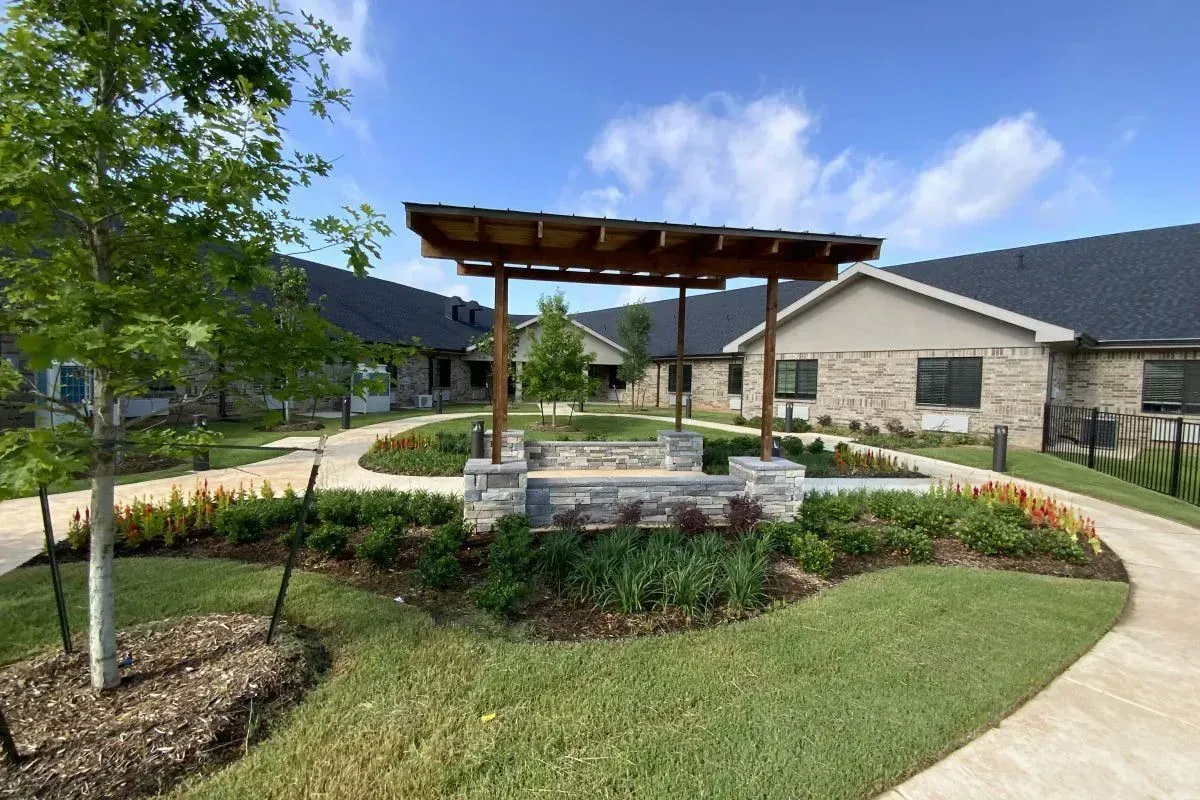
Practical Green Buildings with a Purpose
Sustainability in senior living design is rooted in thoughtful choices—whether it’s selecting efficient building materials, making targeted upgrades, or working collaboratively to support healthier environments for residents.
It’s not about fitting a specific mold, but about finding meaningful ways to reduce impact while enhancing daily life.
In this blog, we will explore:
- How simple energy upgrades like LED lighting, smart thermostats, and better insulation can make a big difference.
- Practical ways to conserve water, reduce waste, and engage residents meaningfully.
- Strategies to extend sustainability beyond the building, through landscaping and thoughtful transportation options.
- The importance of passive design and durable materials for long-term value.
Why early collaboration ensures sustainable solutions are tailored, practical, and impactful
At Rheinlander Architects, we believe that sustainable design is simply good design—and we bring that philosophy to every senior living project.
If you're ready to create a sustainable, cost-effective, and truly resident-centered senior living environment, we’d love to partner with you.
Contact Rheinlander Architects today
to start a conversation about how we can bring your vision to life.
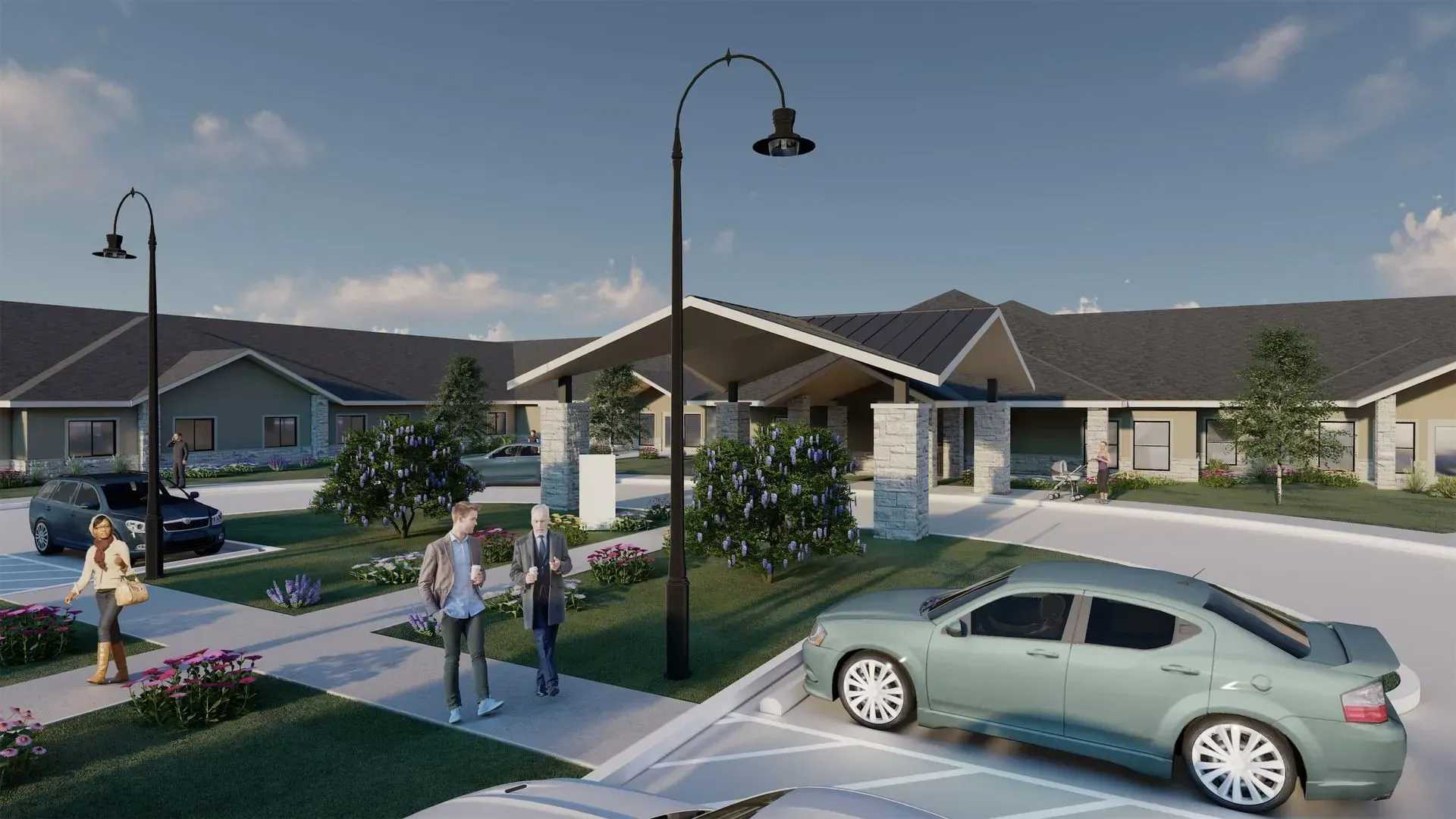
Frequently Asked Questions: Green Senior Living Design
Why is sustainability important in senior living communities?
Sustainable design supports the health, comfort, and dignity of older adults while reducing environmental impact and operational costs. Features like natural lighting, improved air quality, energy-efficient systems, and non-toxic materials can directly benefit residents' well-being.
What are some low-cost ways to make a senior living community more sustainable?
Simple upgrades—such as installing LED lighting, using smart thermostats, adding proper insulation, and choosing low-flow plumbing fixtures—can significantly reduce energy and water usage without requiring major renovations or high upfront costs.
Is LEED certification necessary for a sustainable project?
No. While LEED certification is a respected benchmark, it’s not required to achieve meaningful sustainability. Many of the most effective strategies are cost-effective and can be implemented without pursuing formal certification.
What role does landscaping play in sustainable design?
Sustainable landscaping uses seasonal shade and/or sun exposer, native plants, rain gardens, and strategic layout to conserve water, support local ecosystems, and reduce maintenance. These elements also create more inviting, nature-connected spaces for residents contributing as a passive design element.
Can sustainable design really save money over time?
Yes. Energy- and water-efficient systems can reduce utility bills by 30%–90%, and durable materials lower long-term maintenance and replacement costs—resulting in significant savings over the life of a project.
Does sustainable design limit aesthetic options?
Not at all. In fact, sustainable design often enhances the aesthetic experience by emphasizing natural materials, daylight, and outdoor connectivity—elements that contribute to a warm, welcoming environment.
How can architects support sustainability goals without increasing project costs?
Through early collaboration, strategic planning, and value-driven design choices. At Rheinlander Architects, we focus on integrating sustainability from day one—tailoring each solution to the project's goals, budget, and resident needs.

